The dawn of the Industrial Age is usually said to have been in Great Britain in the late 1700s. By 1900 the United States had its own factory system.
Postcards showing bricks-and-mortar buildings began to appear, but cards of their interiors took time to follow.
My collection of these interiors began with cards of my hometown prison and has expanded to include more than manufacturing. The range of industries is virtually without limit, and I want workers to be present in large numbers or at least some workers doing unusual things. And for me, a “factory” now includes non-manufacturing views.
Grasse, France, making rose perfume

Roses and romance combine in perfume to be irresistible. The first step in making that perfume requires stripping the petals from roses so that they can be crushed, and the oil can be mixed with other ingredients to make the perfume. Grasse, a French town on the Riviera, has the soil and climate to grow iris and hyacinth as well as roses. Grasse rose oil developed a high-end reputation for its fragrance production. This card is postmarked 1912.
Upholstery Shop, Paine Furniture, Boston, Massachusetts
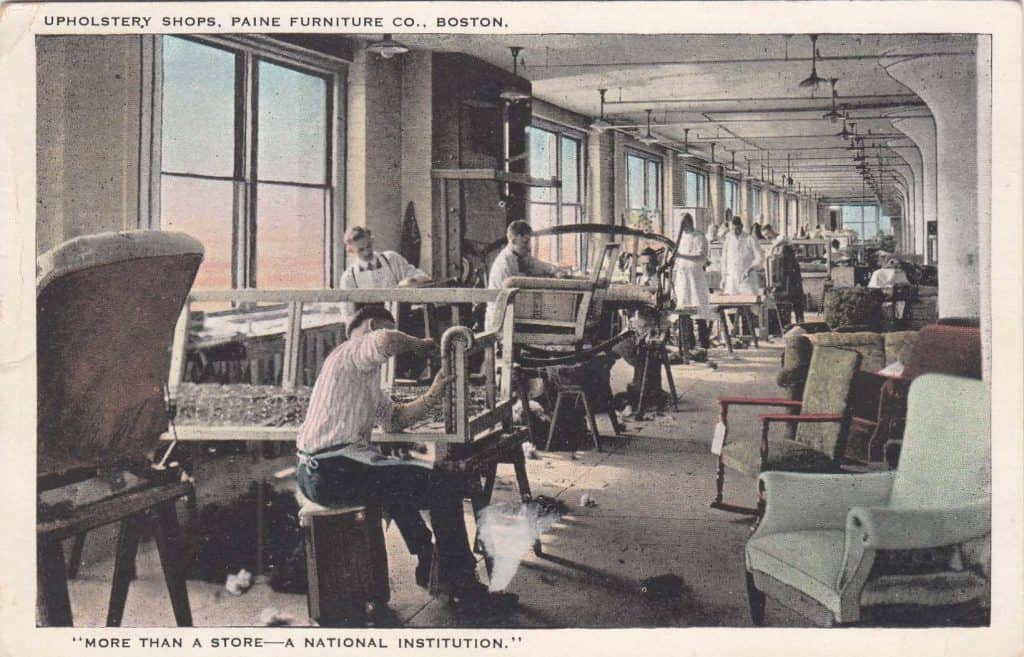
It was founded in 1835 by Leonard Shearer, but by 1890 the Paine Furniture company had the name of Shearer’s apprentice John Paine. In 1914 the company built a 10-story factory that took up an entire Boston block. The new building housed its factory, business offices, and showroom. Its furniture is now in the collections of numerous museums and the company is still active under the name Paine’s Patio. Alas, this card has no postmark.
Filling and Labelling Dept., Franco-American Hygienic Co., Chicago, Illinois

Not the spaghetti company, Franco-American Hygienic began in 1873 producing toilet “requisites,” — flavoring extracts, cosmetics such as face creams and powders. Many of its products were sold through a network of women agents, although it also had retail locations in New York and San Francisco. The company had faded away by 1948. This card is postmarked April 5, 1919.
Packing peaches, a leading industry in North, Yakima, Washington
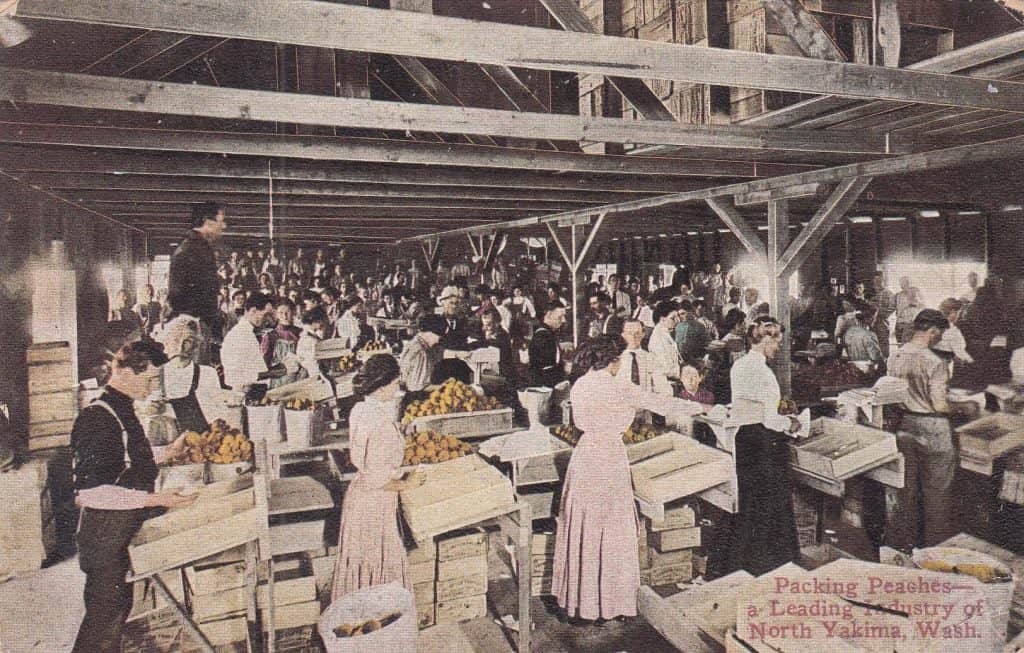
Fruit and vegetables have been grown commercially in the Yakima Valley, Washington, about two hours east of Seattle, since at least 1887. The arrival of the Northern Pacific railroad meant that by 1900 some 200 boxcar-loads of fruit were shipped annually. This card is postmarked in 1912.
Unloading bananas, New Orleans, Louisiana
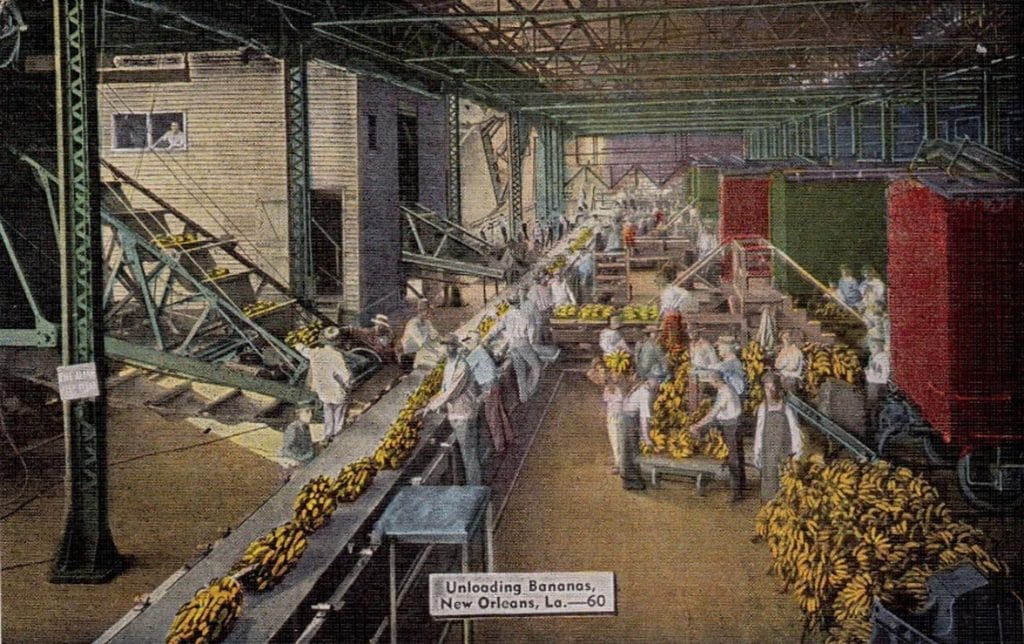
The text on the back of this E. C. Kropp postcard tells the story: “At New Orleans, the world’s greatest banana port, more than 700 ships arrive each year loaded with 25,000 to 50,000 bunches of this popular fruit. At the banana wharves the individual bunches are carried from the hold of the ship to the door of the refrigerator car on mechanical conveyors.” Alas, no postmark.
Metropolitan Life Insurance Co.’s Home Office, New York City
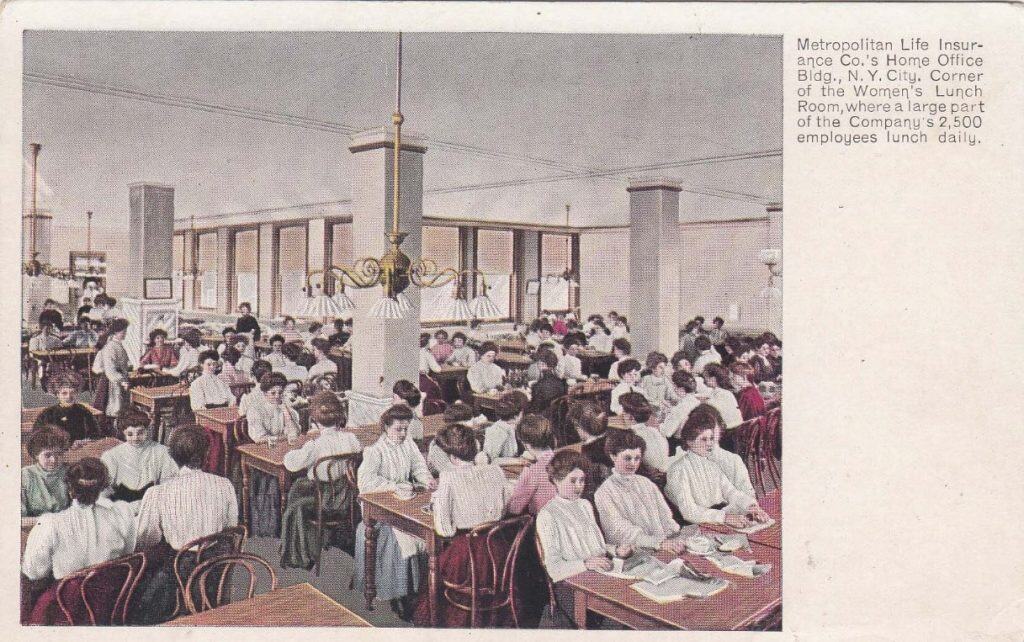
The text in the right border describes this scene as the “corner of the Women’s Lunch Room, where a large part of the Company’s 2,500 employees lunch daily.” An undivided back card with no postmark.
Large Press Room, Bureau of Engraving and Printing, Washington, D.C.
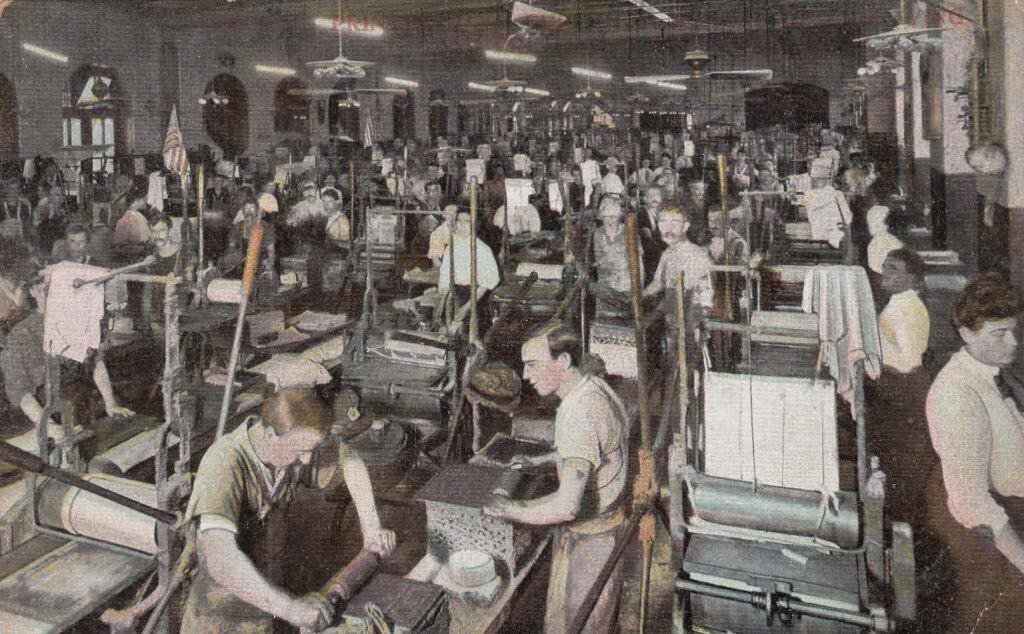
The caption on my card is indistinct but an identical card in color provides the title. Text at the bottom of that card says “Large Press Room where all United States paper money is printed. There are 700 employees at work in the room at any one time. Only hand presses are used in the making of United States currency.” This card is postmarked in 1913.
A Habana Cigar Factory — Fabricante de Tabaco, Habana, Cuba
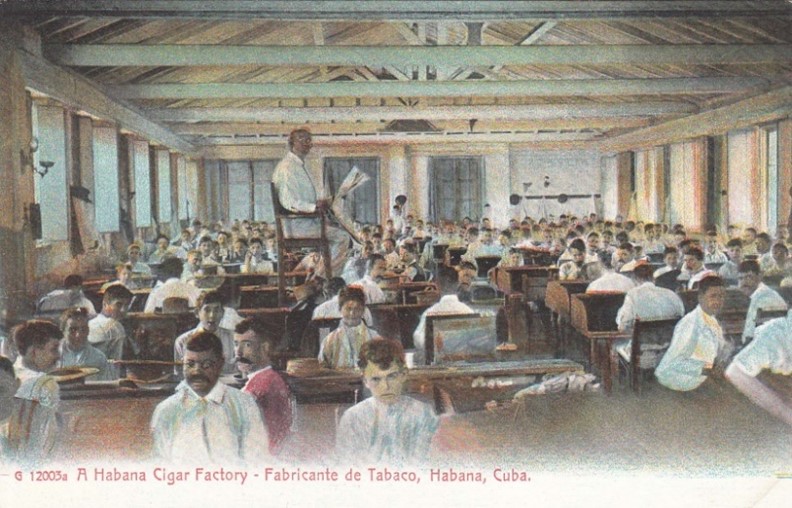
Cigar rolling factories were crowded and the work was repetitive. To break the monotony, “lectors” were hired, usually by the employees, to read newspapers or books aloud. This practice was brought to cigar factories in Florida. Management blamed lectors for strikes in 1920 and 1931 and soon lectors were banned. This Rotograph card is unposted.
Beef Dressing Department, Swift & Company, Chicago.
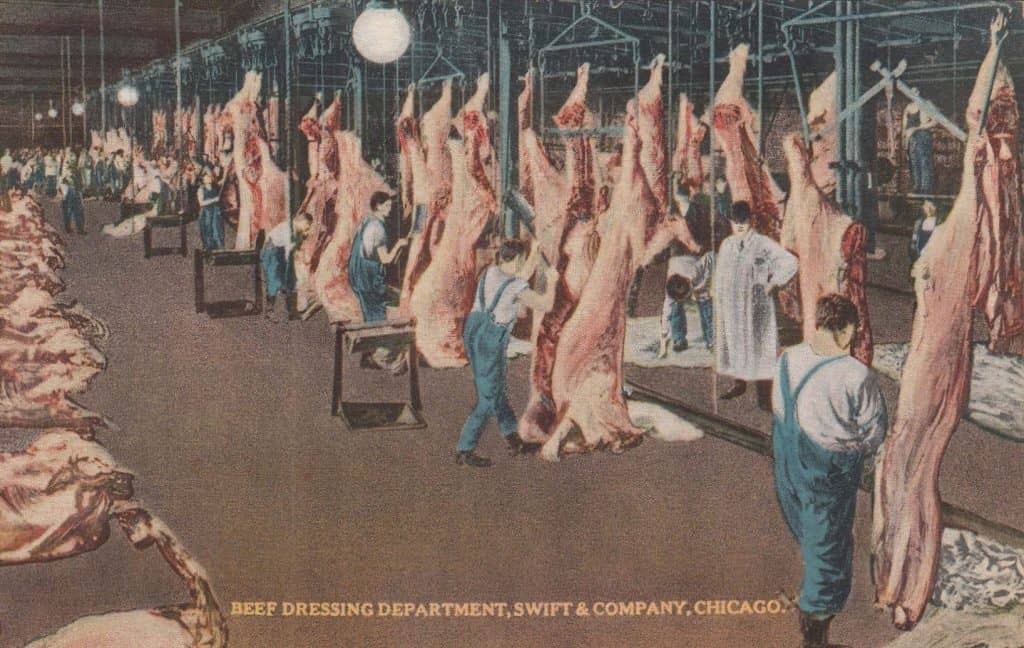
When refrigerated railway cars were introduced in the 1870s, Chicago’s location at the center of numerous rail lines gave it advantages no other stockyard could match. Swift & Company’s large slaughterhouse in 1903 employed about 5,000 workers in the Union Stock Yard. This undivided back card is unposted and has no publisher identification.
Slate Pickers, Pottsville, Pennsylvania
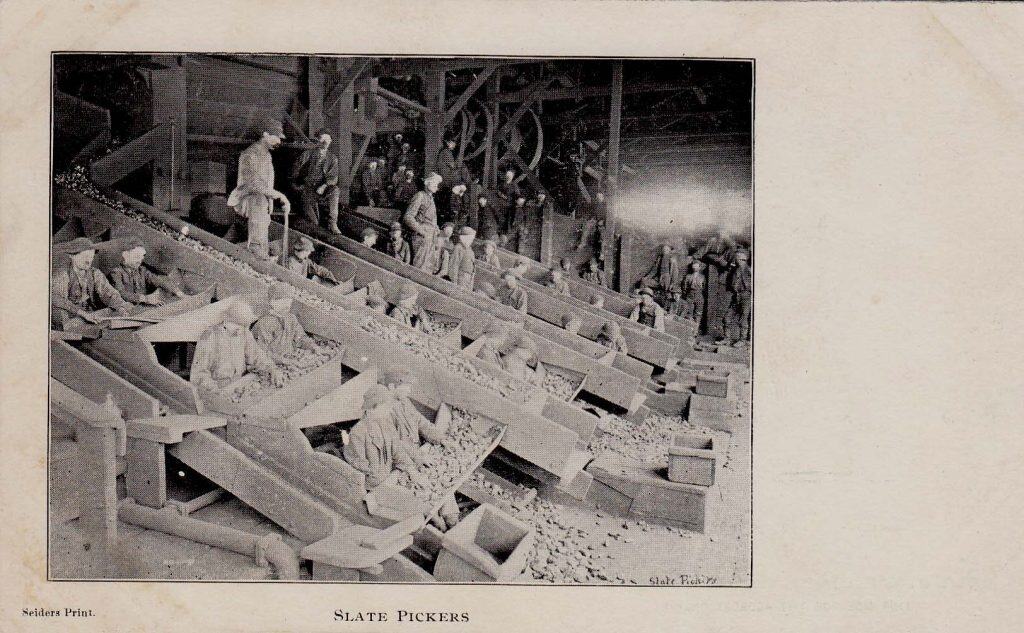
“Breaker boys” are seen in the image on this card. They were children and miners too old for the mines who picked slate from piles of more valuable coal. Slate as a useful product has been quarried in a five-state area of the eastern United States known as the Pottsville Formation since the 1850s. It easily splits into flat slabs that can be made into roof tiles, flooring, and blackboards. This undivided back card is one of series of “Souvenir Views of Pottsville and vicinity,” Pennsylvania.
Remington Standard Typewriter, Ilion, NY
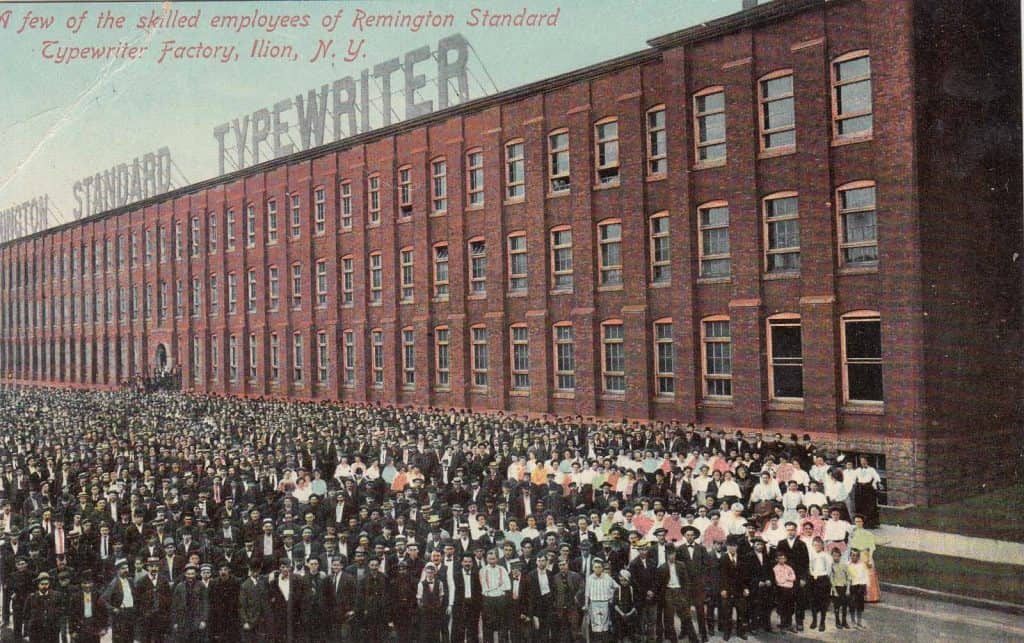
Remington started out as a firearms company in 1816 and was in the typewriter business only from 1877 to 1882. Their first successful typewriter was available in 1878 but the company spun off the typewriter business in 1882. The new concern brought out a series of improved machines under the Remington brand and they sold well into the 1960s. This card violates my interior view bias, however I couldn’t resist. It was published by American News and has a divided back.
When child, I was very fascinated towards collecting postcards as I was thinking that time I’ll sell it for millions in future. 😉
Reality can be cruel but look at all the fun you had!
Great topic
I have a collection of 70+ “real photo” postcards of railroad workers. I’ve paid an average $26. each for them.
Due to Bill’s article, I now have a new category to collect : Interiors of Businesses. I have some of these cards, but did not have the category. Thanks
Obviously the view of the Beef Dressing Department is quite sanitized, as Upton Sinclair’s classic novel The Jungle makes clear.